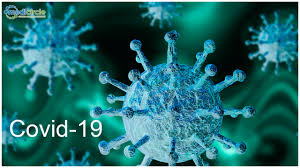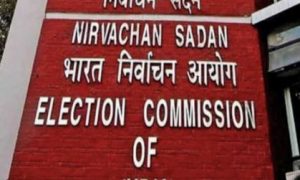Bollywood singer, Kanika Kapoor, provided, on Friday, a demonstration of how the network effect works in possibly spreading infections. Kapoor, who returned from the United Kingdom last week, travelled from Mumbai to Lucknow, where she participated in public events attended by local and national political leaders.One of these leaders, Dushyant Singh, subsequently attended Parliament, and even visited Rashtrapati Bhavan, along with other parliamentarians from Rajasthan and Uttar Pradesh (including some senior Cabinet ministers), for a breakfast with India’s first citizen.
On Friday, Kapoor was diagnosed positive for Covid-19.
After the news went public, several leaders, including the former chief minister of Rajasthan, Vasundhara Raje, and Uttar Pradesh minister Jai Pratap Singh self-quarantined themselves. As did many MPs who met Singh in Parliament. Some of the guests said they had no idea Kapoor had visited London; Kapoor herself said no one had told her about the need for a self-quarantine. And, as evident from the number of people she met, the concept of social distancing was clearly alien to her.
If ever a case needed to be made for self-isolation, social distancing, and quarantines, then Kapoor made it and how – a day after Prime Minister Narendra Modi stressed the importance of just these. Scientists refer to people such as Kapoor as “superspreaders”. On Friday, the US Centers for Disease Control and Prevention (US CDC) released research on the importance of containing such superspreaders who have the potential to infect a large number of people.
The network effect is important because this is how infections such as the one caused by Sars-Cov-2 spread. As of Friday, there were 236 infections in India, with the number increasing by 50 over the previous 24 hours, the most in one day thus far. Globally, deaths have crossed 10,000 and infections 250,000. The spike should worry everyone – although the government continues to maintain that there have been no cases of community transmission in India yet.
Friday was also the first real day of a near-lockdown in many states. Maharashtra announced measures to the effect; Delhi announced more; and other states followed suit. It is clear that while everyone is preparing for the “People’s Curfew” on Sunday, called by Prime Minister Modi, they are also preparing for an extended and perhaps extensive lockdown. After all, Modi did ask Indians to give him a few of “their weeks”. Given Friday’s spike in cases, the next few weeks could be critical for India.
On Friday, Modi followed up his Thursday address to the nation with a video conference with chief ministers of states, discussing measures taken and yet to be taken to contain the spread of the virus.
Meanwhile, on the scientific front, the race is on to develop a vaccine for Covid-19. It’s a challenge that involves several mini-challenges – from shortening the time involved in development to understanding the so-called “immunity period”. Even the best-case scenario is that a vaccine will not be available till we are well into 2021. That explains why there’s so much hype around alternatives – not alternatives as in the snake oil that some in India have been trying to pitch, but drugs that could cure Covid-19.
On Friday, much of the focus was on two malarial drugs after the US President named them as possible candidates for a cure. Experts were quick to term his disclosure premature, but only research and trials can conclusively establish whether or not the drugs have any effect on Covid-19. The good news for India and other developing countries is that these drugs, essentially synthesised versions of quinine, are inexpensive, and widely available (they are used against malaria, which is more common in these countries).
Since this is the weekend – one thing Sars-Cov-2 can’t change – that leads us to the connection between quinine, India, and some people’s favourite weekend (fine, even weekday) tipple, Gin and Tonic (GnT). Winston Churchill said this drink “has saved more Englishmen’s lives, and minds, than all the doctors in Europe”. It was in India in the mid-19th century that British troops took to mixing quinine powder (which was bitter, but needed to be had to tackle malaria) with sugar and soda water, creating tonic (although the first commercial tonic water was launched only in 1858). Even today, the bitterness in tonic comes from quinine.



































